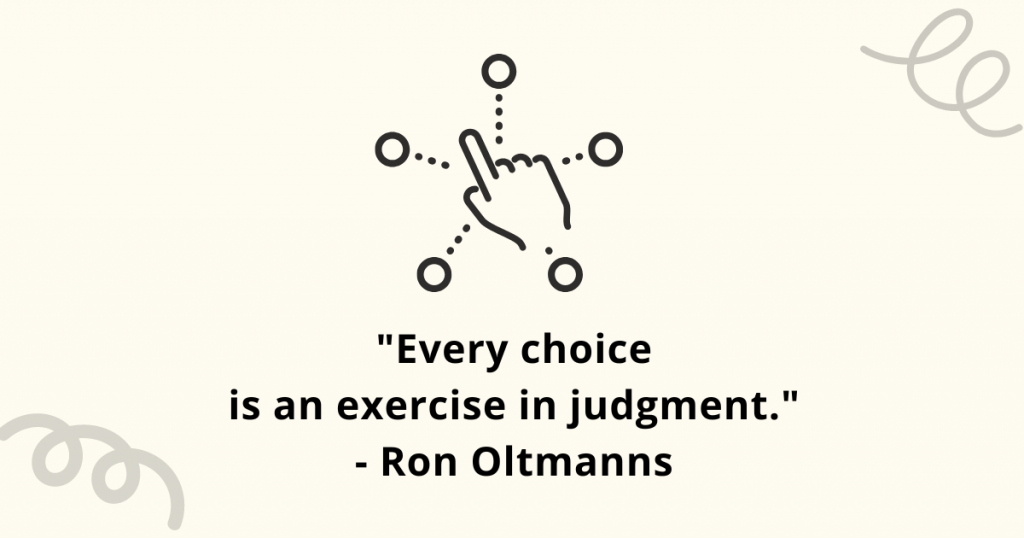The Value of Good Judgment
The Hartman Value Profile is a short exercise in demonstrating good judgment. It sets forth two relatively simple tasks and through them it profiles a person’s ability to see dimensions of value and to make good value judgments.
We make judgments every day.
For example, we decide:
- how to get our work done,
- what’s easy, and
- what will be hard.
An entrepreneur makes judgments about the market and their timing in bringing a new product or service to market. We hire certain people and pass on others. We make decisions about our career, whether to keep working at a particular company or for a certain bo
The Hartman Value Profile provides the measurement of how we judge, react and decide.
Ultimately, we decide if our work is benefitting us or making a difference or whether we would be better off somewhere else. These are just a few examples of the many, many ways that we exercise judgment routinely.

Pioneering a Science of Value
How do we measure the quality of our judgment and decisions? Can we uncover some of our own biases and gain more clarity?
First of all, the problem is that our process of making these judgments and the overall pattern or structure of our judgment is hidden. It’s not something apparent or visible to us.
Robert S. Hartman (1910-1973) pioneered the science of value called formal axiology and he made the structure of value judgments visible and understandable. In the HVP he allows us to map and measure each person’s value vision and blind spots. The Hartman Value Profile provides the measurement of how we judge, react and decide.
Robert Hartman and Mario Cardenas invented the tool in Mexico in 1960. Since then the profile has been translated into many different languages and used in diverse countries and populations. Some of the largest organizations use it to give scientific and mathematical accuracy to describing a person’s value vision–the ability to make good sensible judgments.
Individual leaders like you can use it as well to understand themselves and other people better.
The Hartman Value Profile Measures How We Value
The HVP is a valuemetric instrument.* What that means is it measures how we value and where we have value distortions. It is not a psychometric instrument, though it has been cross-validated with widely regarded psychometric tools like the MMPI and Cattell CAQ and found to have concurrent validity in many significant ways.
Although the HVP can and has been used in clinical settings with psychotherapy clients and psychiatric patients, it finds its widest use among the general population of working people.
Consider one simple example: some people are able to name what they’re feeling and thinking better than others. Their whole internal life is much clearer to them than what’s going on around them. Other people tune in to people around them and their environment and hardly pay attention to themselves at all. Of course there are people who give equal attention to the internal and external world. This is just one specific area that the HVP measures, and it definitely has an impact on where we place value in our judgments.
In summary, the HVP reveals conscious and unconsciously held judgment patterns and habits of thought as well as the emotional biases that shape our values. That means a much richer insight into your own values and blindspots!

How Do You Measure Good Judgment or Values?
One way to measure good judgment is by results over time. People show good or bad judgment through their decisions and problem-solving and their track record over time.
What if you don’t have a lot of time or you have a high-risk situation? This is where the HVP can be useful. You can use it or one of the modern versions like the Acumen Capacity Index by TTISI to get a reading of a person’s capacity for good judgment or acumen. This is not a lengthy process! It only takes 15 minutes.
The results of the HVP or ACI are full of insights into the multi-dimensional world of value judgments. A professional consultant or axiologist will interpret the data that comes in the 15 page ACI report and point out practical applications. Alternatively, you may choose one of the longer TriMetrix versions that uses multiple sciences to give additional richness.
The two exercises that make up the HVP each have 6.4 quadrillion possible answers. This means that for every person in the world there are many more possibilities of answering the profile than there are people!
The profile is very sensitive and subtle in showing value patterns that are unique to an individual. The resulting calculus of value shows both the general value capacity of a person and the specific areas where their judgment shines as well as their blindspots.
Leadskill provides demonstrations of the Hartman Value Profile. If you are a leader trying to grow your acumen or seeking greater self-awareness, we can help! We love to share the science and facilitate the personal discoveries that come out of it. Contact us to begin the discovery process or read more about our assessments.
*The actual technical term for this is the HVP is an axiometric assessment
